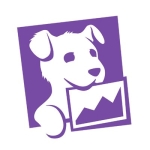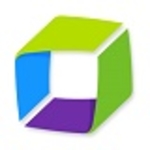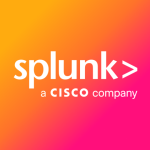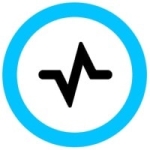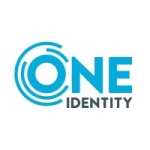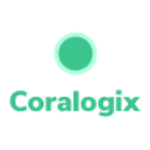What is our primary use case?
Our system primarily utilizes dashboards to cater to both developers and clients. For our clients, we present vital data, highlighting which endpoints are most frequented. These are the very endpoints that users engage with to retrieve predictions for their machine learning models.
We aimed to showcase the popularity of specific endpoints and the rate at which they return varying HTTP codes, such as 200 (success), 500 (internal server error), and 400 (bad request). Clients were keen on pinpointing any anomalies that suggested an endpoint was lagging in its assessment. Such insights were instrumental for both our clients and our team to discern system segments requiring optimization or enhanced alert mechanisms.
Incorporating other Grafana features, we integrated with Slack channels to pull metrics directly from system logs, subsequently crafting Grafana dashboards based on these logs. Alongside this, we employed Slack notifications to keep us updated. From the dashboard, I could glean comprehensive data such as the cumulative number of requests, their duration, requests segmented by response codes, the rate of these codes, an overview of multiple endpoints, and the frequency with which different models were invoked. This data encapsulated the essence of the information we aspired to collect.
What is most valuable?
I appreciate the capability to process logs from microservices and seamlessly integrate them into Grafana.
What needs improvement?
Our team encountered challenges with the dashboard preparation, particularly when crafting Loki queries, sometimes referred to as LogQL. These queries lacked intuitiveness.
Additionally, we operated on older versions of Grafana, Loki, and the backend host. Being a part of a single deployment chart with Prometheus, we faced several UI bugs that significantly hampered our experience. A notable issue was the absence of immediate feedback upon writing queries. The query language's sensitivity, especially concerning indentation and specific characters, made it cumbersome to draft. Omissions or minor errors led to vague error messages, offering little insight into rectifying the problem. Despite having a foundational query, adapting it to our specific needs was tedious.
While our dashboard and its queries functioned adequately, statistics reset when a Kubernetes pod restarted. This resulted in data inconsistencies, such as a continually increasing linear graph suddenly plummeting. Rectifying this issue was challenging due to unclear documentation about modifying Loki queries.
There's room for improvement in Grafana's query configuration tool. Although it provides a default setup, it lacks versatility, especially in our older version. A more robust debugging tool for queries would be beneficial.
Eventually, we transitioned to Datadog, a more comprehensive yet proprietary solution. Datadog offers integrations and pre-configured dashboards for services like AWS's RDS, which we found lacking in Grafana and Loki. The primary challenge with Grafana and Loki was the significant setup time required to achieve the desired functionalities.
For how long have I used the solution?
I've been involved with the current project for almost three years. While I don't utilize this particular solution consistently, it has proven invaluable for certain tasks, especially monitoring. Our endeavor centers around developing a semi-ops platform, and monitoring represents just one facet of this extensive project. Presently, our attention has shifted slightly, as we've been concentrating on establishing various components, such as pipelines for processing machine learning workloads.
What do I think about the stability of the solution?
The system is fundamentally stable, though its reliability is contingent upon the stability of various system components. We encountered some challenges, likely stemming from outdated authorization or authentication methods we attempted to employ.
What do I think about the scalability of the solution?
The solution is scalable. Currently, we are serving one client with a dedicated team working on it.
How are customer service and support?
We didn't rely on any specific technical support for our needs. Instead, when questions arose, we consulted another team within our organization. Although they don't manage Grafana, they provide a variety of tools pre-installed on the AWS side. We typically addressed challenges ourselves, occasionally seeking insights from resources like GitHub issues. On a few occasions, we raised a ticket, and the support team assisted us in resolving our queries and issues.
Which solution did I use previously and why did I switch?
Both Datadog and Grafana offer dashboards and storage panels. Having experience with Grafana, I currently don't see any features in Grafana that Datadog doesn't possess. While Datadog comes with a price tag, it compensates with a plethora of preconfigured tools. That said, Datadog isn't without shortcomings. After hands-on experience with both platforms, I find them remarkably comparable in various aspects.
What about the implementation team?
Loki's setup was handled by the team that configured AWS for us. They established it using a deployment chart, essentially a YAML file detailing various configurations. I made adjustments to certain values, specifically for the frontend Loki pack, and undertook tasks necessary for other setups. The process was straightforward, as I recall.
While deploying with YAML files appeared seamless, our team wasn't in charge of the entire installation. Our involvement was primarily in tweaking some configurations, not the overall operation.
Maintenance for the system largely revolved around adjustments in authorization and specific configurations. Occasionally, we had to intervene directly due to the specificity of certain queries for particular time frames. This might stem from the fact that the tool we used was potentially not optimally coded. Periodically, we found ourselves revisiting and refining it, though it's possible the issues arose from our end or the tool's initial coding.
What's my experience with pricing, setup cost, and licensing?
We opted to explore Grafana Loki, primarily drawn by its open-source nature.
What other advice do I have?
When contemplating dashboarding tools, Grafana Loki stands out due to its beginner-friendly features. While novices might start with simpler tools, Grafana could be a preferred choice depending on integration needs. Given its ability to aggregate logs from diverse services and its integration with Kubernetes, Grafana sometimes emerges as the sole viable option.
For those venturing into Grafana, I'd advocate fully harnessing its features. Monitor metrics, such as API and memory usage, and delve into the specifics of Kubernetes products. Establish dashboards, configure alerts, and sync them with platforms like Slack for effective communication.
Leveraging the support of open-source communities can be invaluable—be it through initiating new GitHub discussions or scrutinizing existing ones.
It's also imperative to stay updated with Grafana. Outdated versions can pose challenges, from UI glitches to query and alert configurations. Regularly checking the change log helps in staying abreast of resolved issues.
While we deploy across multiple clusters, the differences are often minimal. We predominantly rely on a single deployment, with others remaining largely underutilized.
To encapsulate my experience, I'd assign Grafana Loki a score of seven out of ten.
Which deployment model are you using for this solution?
Private Cloud
If public cloud, private cloud, or hybrid cloud, which cloud provider do you use?
Amazon Web Services (AWS)
Disclosure: My company does not have a business relationship with this vendor other than being a customer.









